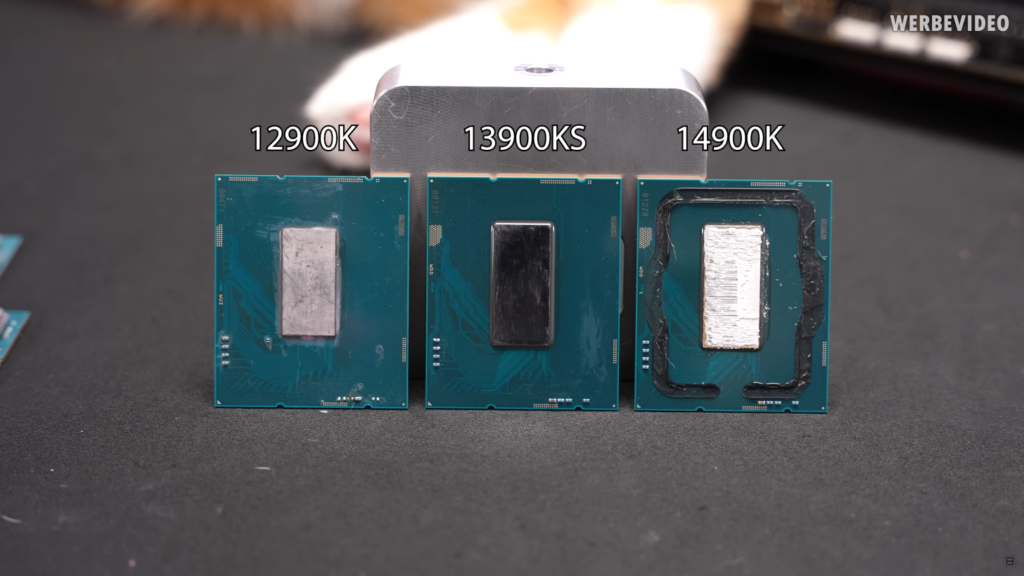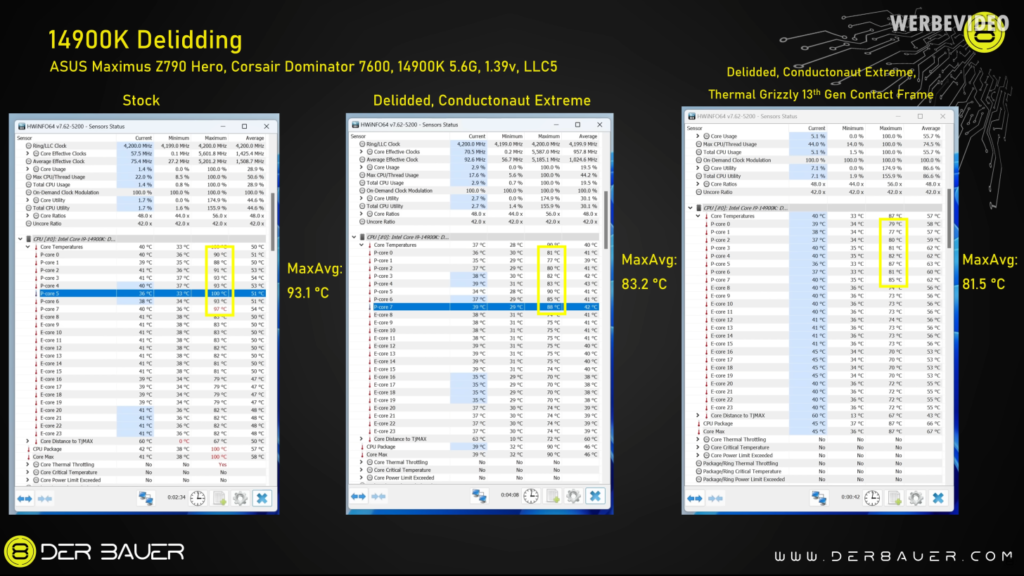Delidded Intel Core i9-14900K CPU Running 13C Cooler, Same IHS & TIM Design As 13th Gen
The delidding of the Core i9-14900K by hardware enthusiast Der8auer has finally been completed, and the results indicate a significant increase in thermal performance.
The delidding process for Intel’s Core i9-14900K CPU is Getting Easier, Which Also Results In Better Temperatures.
A short review of what “delidding” a CPU truly entails is in order before we continue with this discussion. This method entails removing the Integrated Heat Spreader (IHS) and replacing it with a “premium” kind of thermal paste, such as liquid metal.
In addition, the IHS must be removed. Now, what this accomplishes is that it improves the contact area of your cooling solution with the onboard CPU die, which ultimately results in a decrease in temperatures by at least 15–20 percent. However, this is only applicable to a certain category of customers, namely those who are disturbed by high temperatures or who are interested in testing the performance boundaries of their CPUs.
Now, our very own Der8auer has used a “prototype” delid toolbox for Intel’s 13th-Gen CPUs. This toolkit is fundamentally comparable to the one that is offered by Thermal Grizzly. The process of delidding calls for a certain set of steps to be taken. And as was to be predicted, the Intel 13th Generation “Raptor Lake Refresh” doesn’t offer many modifications in terms of IHS.
This is due to the fact that there isn’t a significant generational difference in the sizes of the separate dies. One thing that has changed, however, is the greater temperatures that are produced as a direct consequence of the additional wattage that is associated with the increased clock frequencies, as was mentioned in this evaluation of the product.

Next, Der8auer conducts further tests, such as measuring the height difference between the die and the PCB, so that he can evaluate the new generation in relation to earlier iterations. In addition, it was discovered after measuring the height difference between separate layers of IHS that Intel had allegedly left out a 0.3mm gap. This space makes it possible to apply liquid metal without making any physical alterations such as clipping the IHS out.
The first testing of the “delidded” Intel Core i9-14900K CPU found that the P-Cores witnessed a reduction in temperature of 10 degrees, and this was even without a contact frame. In addition, the temperature of the E-cores dropped by 8 degrees Celsius, which is consistent with what you would anticipate in typical circumstances as well. On the other hand, mounting the CPU with a contact frame, which is a tool that optimises the contact pressure, resulted in a larger temperature decrease, while the difference was modest but contributed to a 13C decline overall.

The simplicity of the procedure is the part that astounds both us and Der8auer, considering that, in his opinion, it was destined to be unsuccessful. Even while there hasn’t been a change in the underlying architecture to make the “delidding” method more straightforward, Der8auer points out that the issue could be isolated to his particular instance of the Intel Core i9-14900K CPU. In spite of this, the findings were rather fascinating.


[…] Intel Granite Rapids Xeon LGA 7529 CPU Cooler […]
[…] Todd Brady, Vice President of Global Public Affairs at Intel and Chief Sustainability […]
[…] Intel Core i9-14900K/KF and Core i7-14700K/KF processors are compatible CPUs that may be used to access the world of Intel Application Optimization. […]
[…] Intel Core i9-14900K: Intel’s latest CPU, the Core i9-14900K, has 24 cores, 32 threads, and 6.0GHz boost frequency, making it the fastest. It has plenty of […]
[…] a stir in the IT community according to the HXL (@9550pro rumored picture of the much awaited Intel Core i9-14900KS CPU has leaked. The picture was discovered on the QR social media portal by HXL, a […]